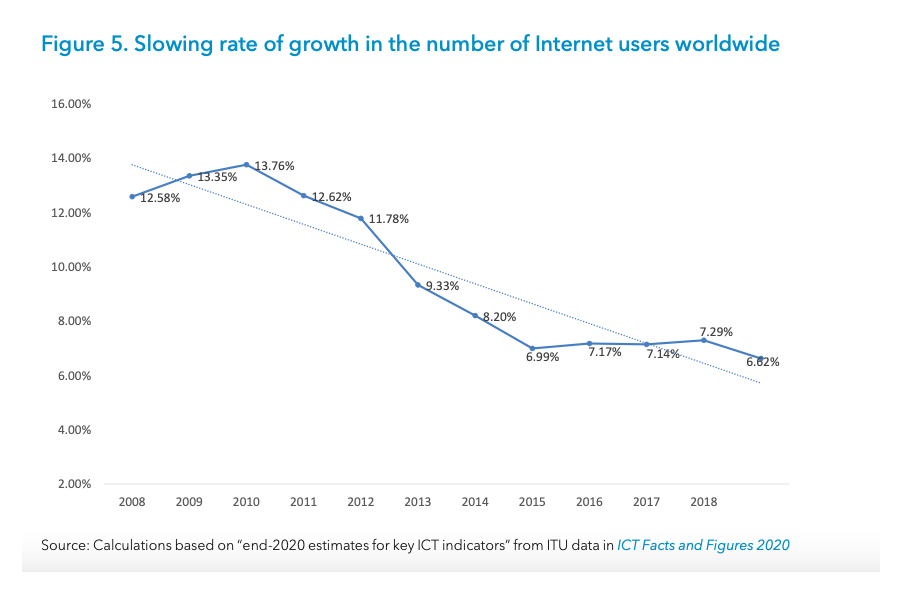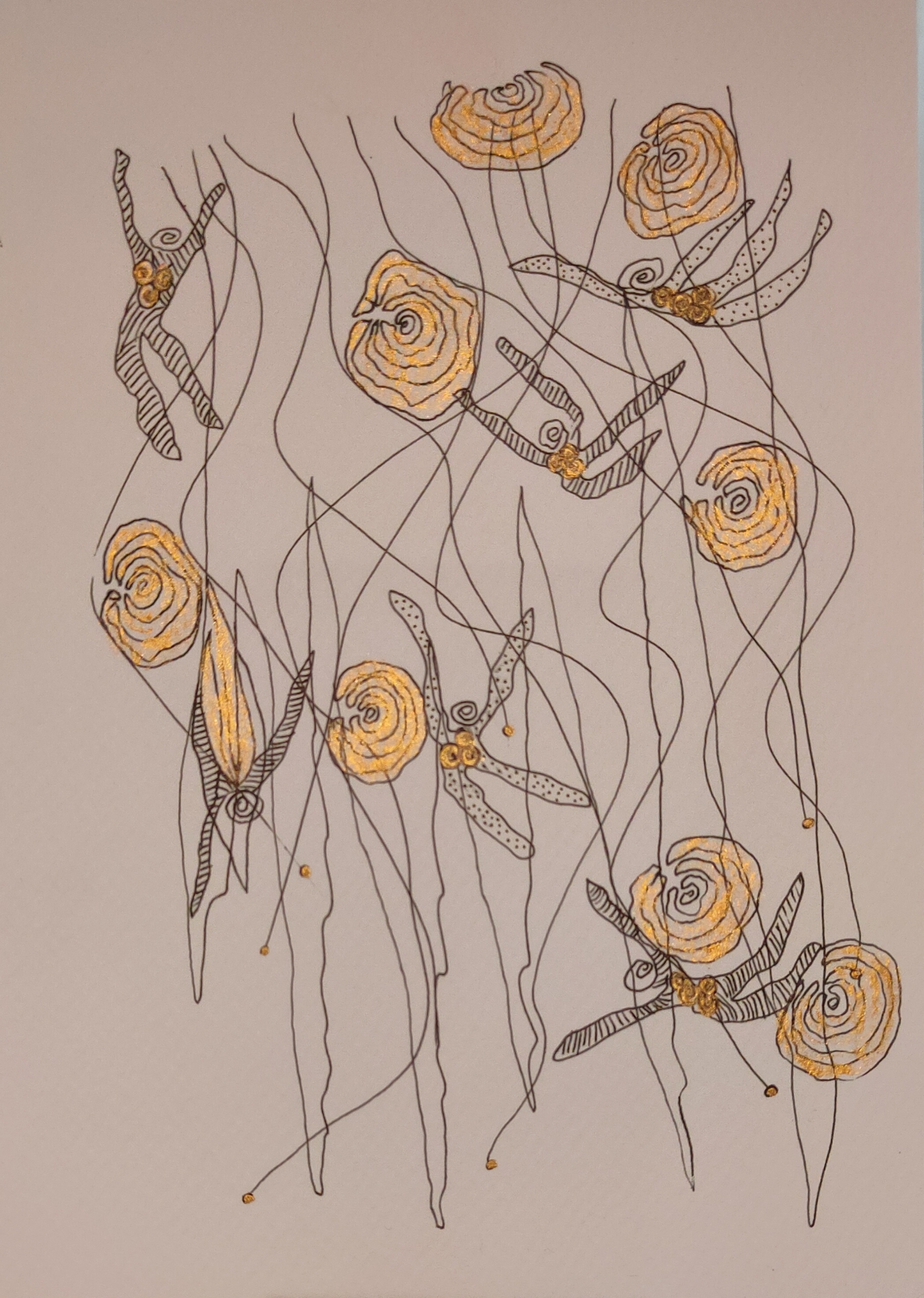
We have all heard the familiar phrase “roti, kapda aur makaan” and its newer iteration “roti, kapda, makaan aur Wi-Fi”. The phrase points to the basic necessities of human beings: food, clothes, shelter and now also the internet. In this fast paced world, especially after the pandemic, the value of being meaningfully connected has risen. It is slowly coming to be seen as a basic need in the context of the considerable digital divide – the “haves” and “have-nots” – and all the economical accelerants that the “haves” have along with the access. Affordable access to the means of digital communication has journeyed from being a luxury to now a necessity no matter where you live and no matter what you do or earn. With smartphones penetrating every facet of our lives from governance to generic services like group and personal messaging, from critical sectors like education to getting vaccination shots; communication networks have become essential infrastructure to people’s livelihood and ways of being.
Have you ever been in a situation where you are in a network blindspot and cannot connect to anybody; or would have to travel 10 kilometres to get a “One Time Password”? For many this is a lived reality. Despite the focus on universal connectivity, the meteoric growth of internet use and broadband connectivity, the success of private sector-led network deployments, user growth over the internet is slowing.

Annual growth in the number of users of the internet has halved from 12% in 2016 to 6% 2022 [1]. Over half of the world’s population still does not have access to the internet. In India, 53% of the population, i.e. around 742 million people, were still offline and excluded from the benefits of the global digital economy at the start of 2022, even after the pandemic-induced online frenzy [2]. Traditional solutions such as broadband ISPs, mobile telephony, etc. are mostly built in a top-down fashion due to the mobilisation of a large amount of funds and techno-human labour. These are showing signs of having reached their limits.
There is a slump in the penetration of the internet and the number of internet users as mobile network operators struggle to find viability in markets with subsistence-level incomes and/or in sparsely populated regions. Varied attempts to address this problem, through universal service strategies/funds, private sector initiatives or philanthropy, have met with limited success due to high levels of undisbursed funds, outdated legal frameworks which limit the ability of governments to fund new technologies, low transparency levels leading to gross mismanagement, lack of institutional capacity and political interference [3].
Digital divide persistence
The above stats also come with the caveat that much of the existing approach to the digital divide is based on a binary classification of internet use by only considering whether someone is or is not an internet user. Ester Hargittai further suggests that people search for content in a myriad of ways, and there is a large variance in how long people take to find various types of information online [4] Anant Kamath expands on how accessibility does not automatically translate into opportunities for socio-economic movement. His research with Dalits communities in peri-urban Bangalore observes how ICTs do not augment their lives, as existing prejudices of language of the internet, interpersonal social networks and valuable phone contacts for getting jobs still prevail [5]. Simultaneously this divide goes deeper in terms of gender inequality or “graded patriarchies” where women are not allowed to own phones or have mediated use of phones by their male relatives and gendered social norms. For example, Preeti Mudliar pointed out in her research in Rajasthan how women are not able to access otherwise functioning and neutral public Wi-Fi spaces because they cannot access public spaces or commute safely [6].
Time and again histories of power and access result in prioritising the needs of the privileged. Privilege has led to unequal access to new opportunities, whether in irrigated agriculture, off-farm or urban employment, piped water, housing, electricity, public distribution systems, etc. It is actually a manifestation of other underlying divides, spanning class, caste, geography, gender and other divides [7]. Communication networks repeat similar cycles of inequality where both processes of “categorical exclusion” or “opportunity hoarding” are at play [8]. The question arises; how do we equalise access? If we consider the desired end goals of empowerment and opportunities, access leads to information, which can lead to knowledge, leading to empowerment and opportunities. Maximising digital dividends in a society requires working with the analogue foundations of that society [9]. It is important to not just reinforce the idea of mere “access” but also complementary capabilities which promote agency. Reducing the divide requires improvements across all the dimensions of ICT (dubbed as the “4C Framework”) [10]:
-
Computing – The software and hardware are black boxed which becomes obsolete. Women especially have their use of phones regulated or are stigmatised for carrying their own personal phones/devices. Computing devices which are easy to use and maintain are necessary. Principles of open source, interoperable, extensible and those catering to the needs of various communities need to be thought about.
-
Connectivity – While mobile telephony is improving worldwide it remains limited in rural/remote areas. We need to look at both local connectivity between peers and then globalised networks to aid the flow, generation and exchange of knowledge.
-
Content – Meaningful content is usually text heavy and not available in many languages or is locally irrelevant. Oral traditions, faceted perspectives and branched narratives are lost as people tend to become passive consumers of information instead of generating meaningful content. Rich content demands multimedia (useful to overcome literacy issues), which, in turn, requires broadband connectivity.
-
(Human) Capacity – The idea that the digital divide can be overcome with increased access to ICTs and the internet is an insufficient notion as technology itself cannot budge social inertia [11]. In addition, we need to look at enabling spaces to build human capacity and address the exclusions.
Bottom-up connectivity strategies
Traditional telecom models of broadband, mobile telephony, state-led digital infrastructure measures and large private ISPs address the issues of binary access, but do not provide the space to engage with the communities and build up to meaningful connectivity. With their models, the profits are retained by telecom companies rather than flowing into local economies. The current scenario forgoes the complexities of socio-cultural scenarios and looks at access only from a technological lens.
It pushes us to rethink how networks are built, owned, operated and utilised. The idea needs a space where communities can be online while creating, consuming and controlling their own content and services, being able to address their local challenges and issues, including connectivity, communication and also access, and being an equal participant of the internet (global network).
Since, community networks require maintenance and care, it requires additional human intervention which urges the formation of more human connections and capabilities. However, the preexisting matrices of domination need to be tread carefully and be accounted for in the whole process from setting up to distribution and maintenance. Community networks are recognised by the Internet Society (ISOC) as a way of bridging the digital divide. They emerge when people agree to establish and maintain certain infrastructures for connecting to the internet. In short, they provide “internet by the people, for the people”. As locally-owned and operated networks, they can focus on the local communication needs and challenges of the communities. These networks cannot happen in isolation. They require an initial jostle to kickstart them and additional support for maintenance which pushes for building capacities in locals.
It furthers the idea of internet and access being empowering since communities, with appropriate training, can own and sustain their own networks and initiate the flow of local economies. It can support methods of alternate livelihood generation like local SMEs [12] or community support centres [13] etc, help communities set their own agenda in self-organisation, collectivisation and express their autonomy [14].
As decentralised systems, they have greater potential to lower cost to access, help retain more funds within the communities and kickstart entrepreneurial ecosystems. By virtue of their technology to enable both global and local/peer networks, they can help in response and resilience to disasters or unforeseen internet shutdowns. We can see them from beyond the technological infrastructure of just encompassing software and hardware but also as participatory spaces that promote social solidarities.
A big shout out to all those who have been trying to make this piece stronger: Micah Alex, Rishab Bailey, Sanketh Kumar, TB Dinesh and Janastu and its beings for the learnings that come from the space.
By training, Shafali is a new media designer and a computer science engineer. She is currently building her practice in the space of community, technology and now, policy. As a part of Janastu collective, she works with archives to bring out diverse narratives and stories and with young women in rural areas to explore feminist spaces. As a fellow with the Harris School of Public Policy (Chicago), she’s pursuing research on community networks and how they can foster a space for co-creating the internet keeping feminist values and care practices in mind. As a new media artist and designer, her work critically questions the existing systems in place and looks beyond the horizon.
Notes:
[1] O’Dea, S. (2022, 28 February). Global internet user growth. Statista.
[2] Kemp, S. (2022, 15 February). Digital 2022: India. Datareportal.
[8] Tilly, C. (1998). Durable Inequality. University of California Press.
